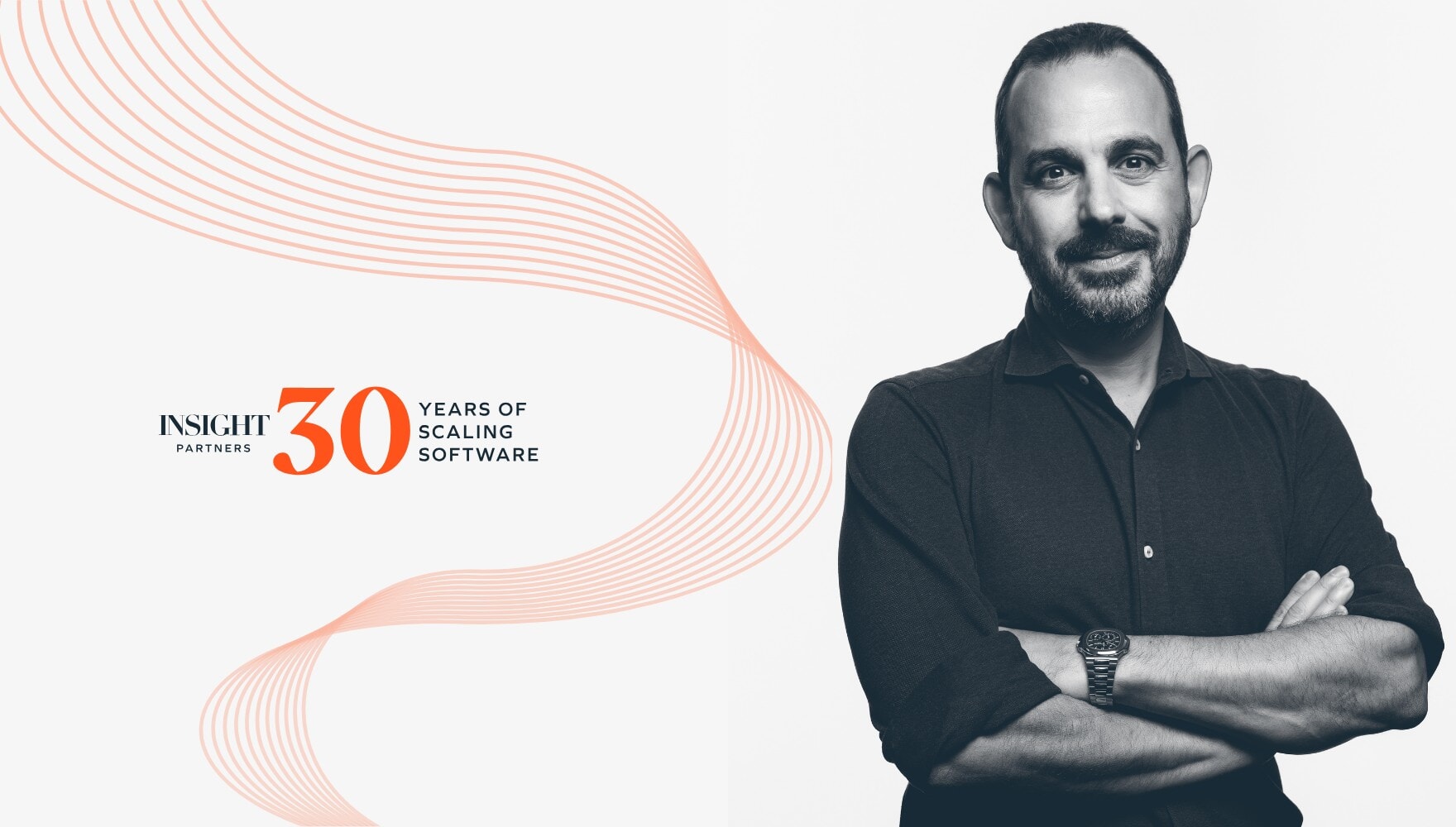
From the Chief Digital Transformation Officer: 5 key components of digital transformation

This article first appeared on VMware.com.
When I used to introduce myself as a Chief Digital Transformation Officer, I frequently got the same response. People smiled and nodded, but you could see it in their eyes — they heard the words but didn’t know exactly what “digital transformation” meant. After all, isn’t every company undertaking some kind of digital transformation these days?
The problem with “digital transformation” is that it means many things to many people. To me, it’s simple: Digital transformation is about revolutionizing the processes by which your organization can manage change, now and into the future. Said differently, digital transformation is simply transforming your ability to transform. On one level, doing that involves the direct use of technology with well-architected solutions that most efficiently and beautifully achieve focused business outcomes. But on a deeper level, it’s about culture and philosophy, mindset and approach. Digital transformation is about turning your organization into a forward-thinking, quick-moving, operationally-optimized engine for success.
What does that mean in practice? There are five key components of digital transformation. With these, you’re armed and ready to discuss how your company is taking charge of its future and leading in an ever-evolving world.
1. Digital transformation is a journey, not a destination
No one asks the Chief Compliance Officer what they’re going to do once everyone complies. The simple reality is that rules will change, people change, new products and projects will emerge, norms shift, and there is always work to be done. It is the same with Digital Transformation.
You may think you have a digital destination in sight. Your infrastructure will be fully agile across the data center, multiple clouds, and edge; automation will clean and organize your data to gain intelligent insights efficiently, and artificial intelligence will begin to infiltrate and lean out your processes. But as you work toward your goals, the world isn’t standing still. Technology is constantly in motion, and so are your competitors.
2. The tools that seem critical today may be outdated tomorrow, and the thinking that drives your strategy now might be antiquated in six months
Digital transformation is about preparing for an ever-evolving future, and putting the systems and the culture in place to allow for constant reinvention and improvement. No organization will ever be fully digitally transformed, just like it’s impossible to ever be done managing your people, or maintaining your financial records. To be a leader, you must always be out in front, and always in forward motion.
3. Digital transformation is about agility
Agility enables an organization to constantly improve its vision, strategy, operations, and culture — and react to rapidly-changing conditions. Too often, organizations get bogged down in creating plans and processes to deal with specific scenarios. But the reality is that fact patterns rarely repeat themselves, and what you really need are systems that enable you to create new plans on the fly, without trying to predict the future in advance.I talk to teams about developing playbooks for “how to think” not “what to think,” because we’re never going to see the exact same situation twice.
Having plans doesn’t matter nearly as much as having a plan for how to pivot quickly to new plans, and understanding that those plans inevitably will need to change. After two decades as a Navy SEAL officer and commander, there’s nothing that prepared me better for the evolving world of digital technology than the constantly-shifting demands of the battlefield. As a SEAL, I needed to have an approach for every individual crisis, but also for how to think about crises more broadly, and how to quickly adjust my organization, and land on the most effective way forward.
Digital or not, that’s what successful transformation means: having agile systems in place that can support even the quickest movements and pivots, while also allowing an organization to take advantage of new opportunities without delay, and without throwing the rest of the company off course. One of the most important things I do in my role is create structures and norms that support this kind of agility, allowing people and teams to move forward and back as needed — a concept I call dynamic subordination – enabling big moves with speed and effectiveness.
4. Digital transformation is about optimizing your operating model
As a first step, digital transformation requires thoughtful analog transformation. Too often, I see people jumping to how quickly they can digitize functions without first asking the more important question: is this the best process to begin with? If you make a bad process digital, what you end up with is a bad digital process.
The goal can’t just be to become a digital organization. Technology is a means to an end, not the end in itself. This means you need to start in the analog world and really ask yourself what your customers need, what your employees need, and what your business needs. Build out the right framework, come up with the right outcomes, sketch out what the ideal flow and experience would look like — and only then start thinking about the digital tools that can help you get there. Policies, process, and even mindset can become outdated and ineffective, so digital transformation starts with looking at end-to-end operations and outcomes.
It is necessary to evaluate the decisions being made in your organization, at the cadence of meetings, at the management tools in place, and at the process by which expectations are set and managed. Are the right people getting the right information at the right time? If not, then how can you optimize that flow? Only then can you look at the tools themselves.
It is rare, and maybe even impossible, that effective digital transformation would just involve transitioning an existing operational structure onto a technology-powered platform. There has to be more thought than that, more exploration of why you want to be digital in the first place, and more of an understanding that operational concerns are only amplified by the power of new technologies.
5. Digital transformation is about outcomes, not outputs
Fundamentally, the goal of any business is to help your customers. In the B2C space, that’s a direct question: How are you helping your customers? In the B2B space, there’s an extra layer to consider: How are we best helping our customers to help their customers? The way I like to think about it is that the goal of our digital transformation is to best enable our customers to digitally transform themselves, all in the spirit of serving their end users.
Having that outcome in mind drives everything we do and affects the analysis of our success. It’s not about how much we produce, how many products we offer, how much we sell, and how busy we find ourselves in the course of a day. It’s about how much we’re enabling our customers to improve and accelerate their transformation journey. In the SEALs, we were trained to look for the easiest and fastest way to reach a goal, and that’s what outcomes over outputs really means. Digital transformation is about taking work, time, uncertainty, and cost out of the equation, to make business easier, faster, and far more effective.
6. Digital transformation is about customer-centricity
Fundamentally, it’s about finding better ways to meet needs that you and your customers don’t even know you have. This is the sweet spot for what it means to be on a digital transformation journey. We now have the power to use data to predict needs instead of just meeting demands, and to add value instead of just powering existing transactions.
If you can stay ahead of where your customers’ knowledge is, and keep finding ways to expand the value you can add to their businesses and their processes, then you are thinking digitally and leading the charge on transformation. We have to beware of finding ourselves on a fast train to the wrong station. Digital transformation isn’t about using shiny new tools for the sake of using shiny new tools. It has to be laser-focused on what you’re actually getting from those tools. The use of technology should be purposeful and provide clear business value that customers can understand and appreciate. A digital transformation leader has to help others see the vision.
I know all the risks and all the opportunities are in the “unknown, unknown” quadrant. That’s why we constantly seek to gain a deeper understanding of our customers, and then develop the strategies to minimize risk and capitalize on opportunities. We stay agile- moving forward and back- adapting as needed to solve our customers’ needs, and anticipating the needs to come. We shift quickly and help our customers shift just as fast to stay ahead of the curve. We are preparing for the known tomorrow, the unknown tomorrow, and the unknown unknowns that tomorrow will bring. That’s what digital transformation is all about.
Taken together, these five principles form the core of what motivates me every single day, looking at how I can not only drive our digital journey but also improve our ability to drive our customers’ digital transformations.











